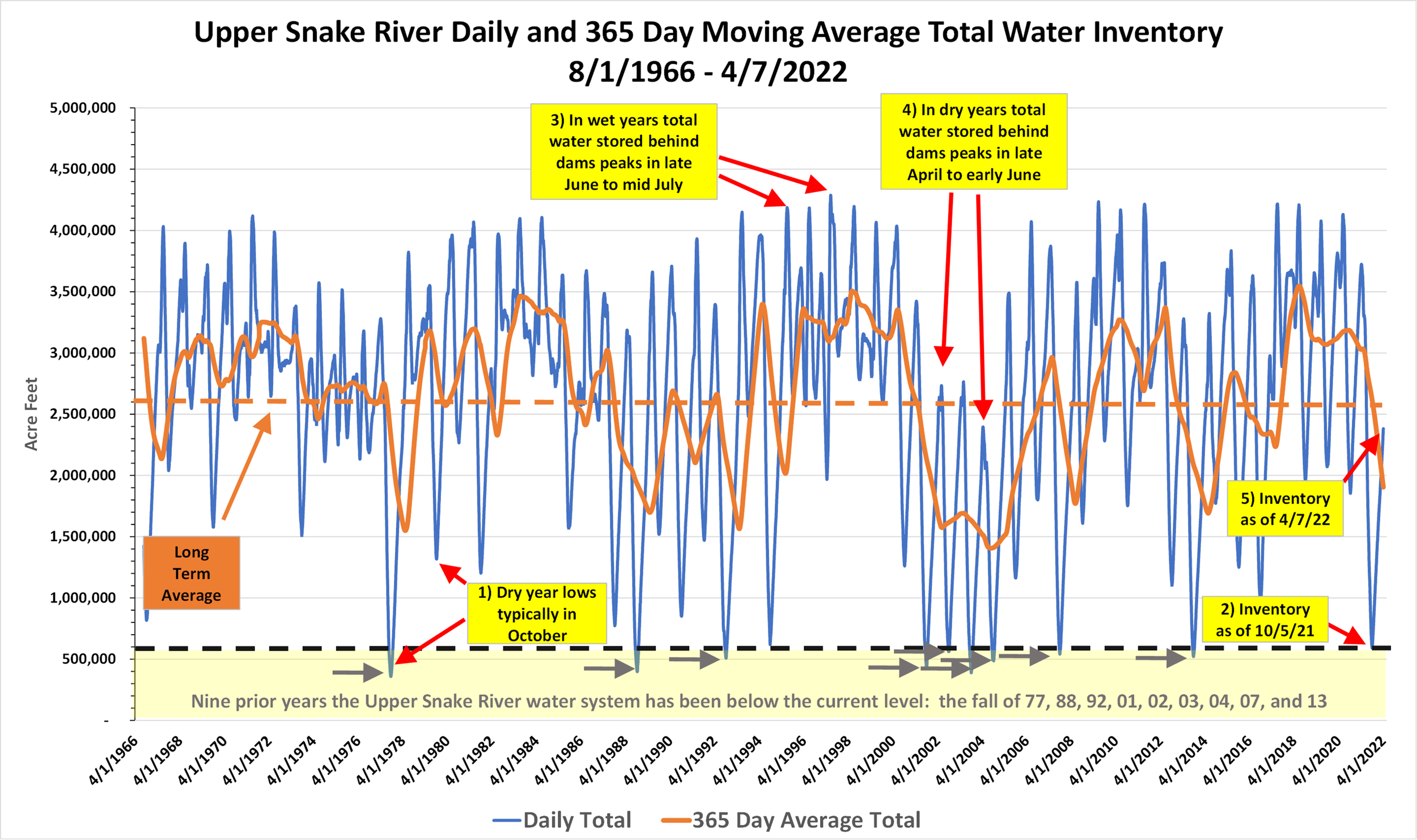An in depth look at water availability in the upper Snake River in 2022 | Part III
Lower than average snowpack in the mountains of eastern Idaho and northwestern Wyoming following a drought year in 2021 means reduced water available for irrigation in central and eastern Idaho and parts of western Oregon. The graphic below is an update of one we published last year which puts into perspective the current drought in eastern Idaho and western Oregon as it relates to surface water irrigation availability relative to previous years.
The blue line is the daily total of water stored in the dam system of the Upper Snake River in eastern Idaho and the northwest corner of Wyoming. The oscillation of that line shows the annual seasonal change in that inventory as the total stored water hits its lowest levels in early October (box 1), builds into late spring and early summer, and then decreases through the remainder of the summer as water is released from those dams for irrigation and other uses.
In the light-yellow box at the bottom of the graphic, one can see nine years that saw lower minimum levels than that in October of 2021 (box 2). The question then becomes how much will water inventories recover before usage in the following summer. Some years such as 1992 recover to high enough levels that there is no apparent shortage for irrigation the following summer. Others, such as 2002 – 2004 do not fully recover.
So, what does this history tell us about what to expect in 2022? It turns out that years of abundant water availability (box 3) peak in their stored volume later in the year than do years of low water availability (box 4). This makes sense in that we might expect higher levels of snowpack in the surrounding mountains to take longer to melt and flow into the dams than years of lessor snowpack.
The good news is that the volume of water stored as of April 7th (box 5) was already roughly equal to the lowest peak level seen in 2003 which peaked in late April. So one can conclude this will not be the worst we have seen. What remains to be seen is how much snowpack and water remains to flow into the system, how long that will take and can we at least hit the peak levels seen in June of 2001 and 2002.

